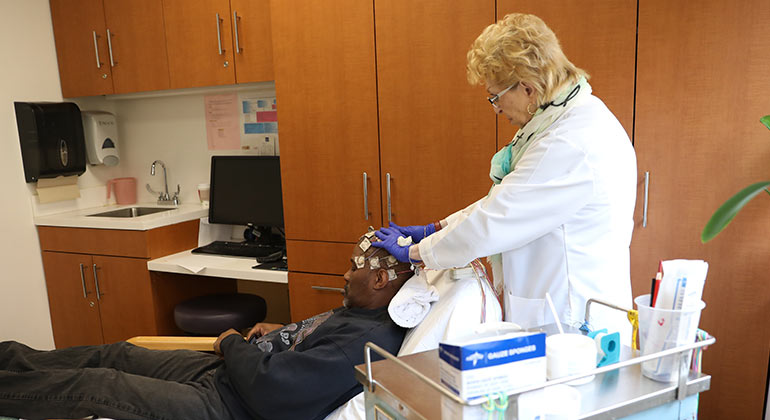Types of Seizures

Seizures can have a wide variety of symptoms; some are quite dramatic while others are very subtle. After certain types of seizures, an individual may feel confused or exhibit odd behavior, poor judgment, or aggression. The most common seizure types include the following.
Focal Seizures
A focal seizure happens when abnormal electrical activity is restricted to a limited area of the brain. There are different types of focal seizures.
- Focal onset aware seizures: These seizures occur while the individual is fully awake. Sometimes these small seizures are called “auras” or “warnings.” Symptoms are determined by the location in the brain that is being affected. For example, a focal aware seizure from the back of the brain (occipital lobe) may cause a visual hallucination, while a seizure from the side of the brain (temporal lobe) may cause a feeling of déjà vu or a strong emotion.
- Focal onset impaired awareness seizures: If a focal seizure spreads to a larger brain area it may impair an individual’s level of alertness. A person having a focal onset impaired awareness seizure may not respond to questions and may exhibit repetitive movements of the limbs and odd behavior such as picking at clothes or chewing. Sometimes such a person is mistaken for being intoxicated or having a mental illness. Focal seizures can spread and become bilateral tonic-clonic seizures.
Generalized Seizures
With generalized seizures, most or all of the brain is involved. Types of generalized seizures include the following.
- Tonic-clonic seizures: Most often shown in movies and television, these seizures begin with loss of consciousness, falling, and a stiffening of the entire body (tonic phase). Sometimes the person lets out a loud cry, usually followed by rhythmic body movements (clonic phase).
- Absence seizures: These seizures begin in childhood and consist of a short period—usually less than ten seconds—of staring, at times with eye blinking. During this time, the person cannot speak or understand what is being said to them. These seizures do not cause falls, and when the seizure is over the individual goes back to their usual activities, often unaware that a seizure has occurred.
- Myoclonic seizures: Often occurring in the morning just after awakening, myoclonic seizures are a jerk or a series of jerks that occur while awake and may involve a single limb or both sides of the body at the same time. Sometimes individuals with myoclonic seizures blame themselves for being clumsy in the morning when, in fact, they are having seizures.
- Atonic seizures: “Atonic” refers to a loss of posture. Individuals with sudden, brief head drops or falls that often result in bodily injury may suffer from atonic seizures.
Seizure Mimics
Some events may look like seizures, such as fainting (syncope), falls, migraines, mini-strokes (transient ischemic attacks), sleep disorders, movement disorders, and memory problems. Unlike seizures, these disorders are not caused by abnormal electrical activity in the brain. It is important to accurately diagnose and distinguish these events from seizures, because the treatments are different.
Psychogenic Non-Epileptic Events
Other events that can look like the shaking and loss of awareness involved in seizures but that are not caused by abnormal brain activity have a psychiatric cause that is not well understood. Such psychogenic events are not helped by anti-seizure medication. Early childhood sexual or physical abuse is a risk factor for developing these events, but not everyone who experiences them has a history of abuse.
Download this simple and clear Seizure tip sheet to help you learn what and what not to do when someone is having a seizure.